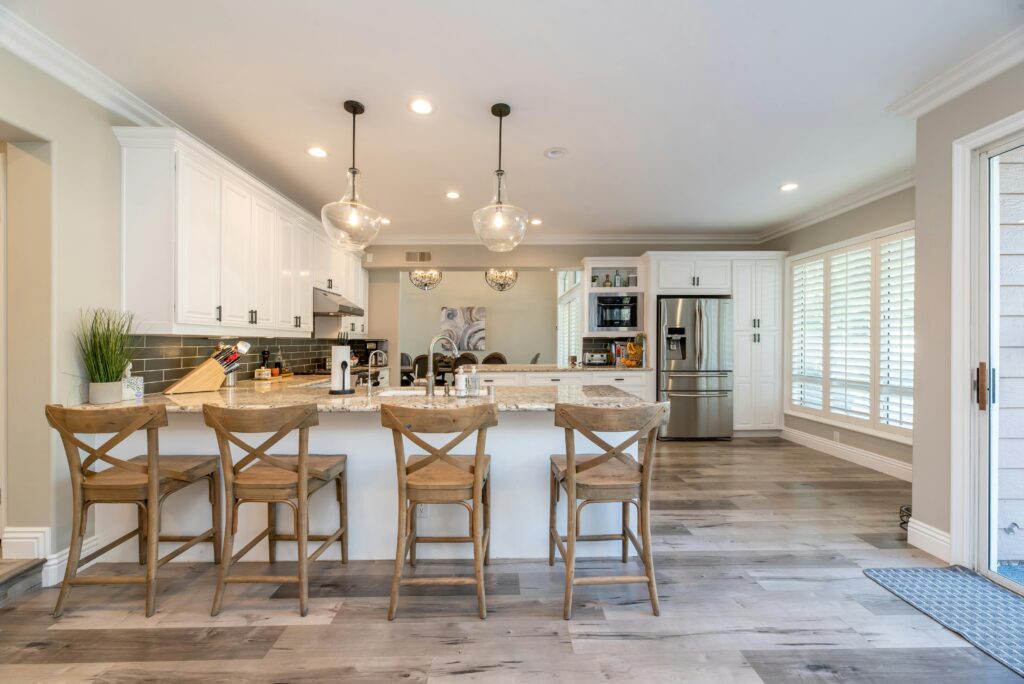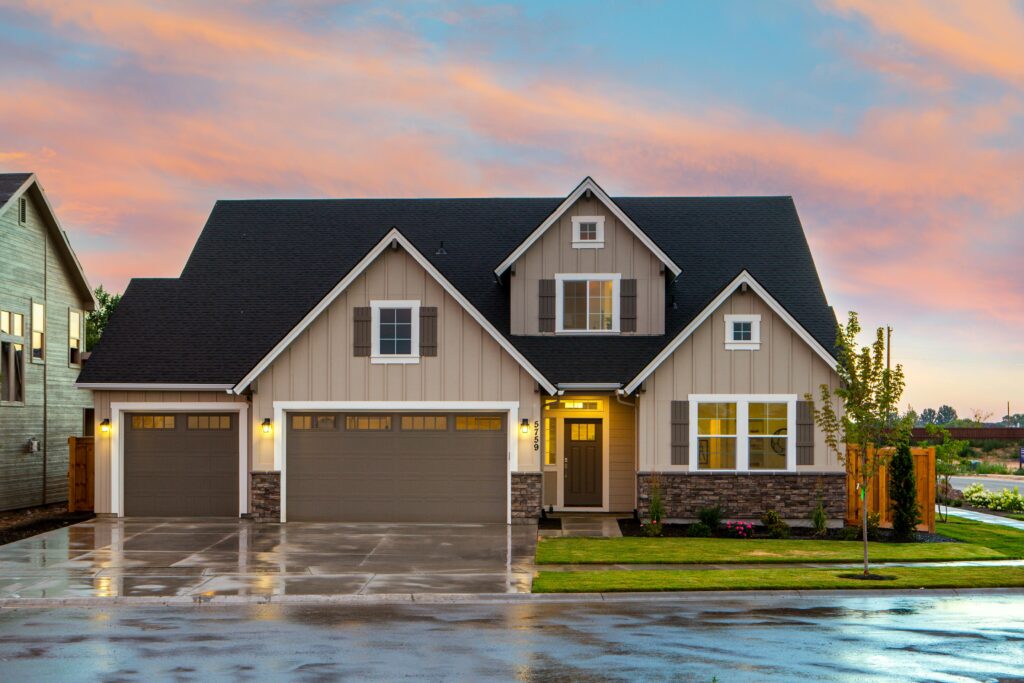A home inspection is a critical step in the home-buying process, providing valuable insights into the condition of a property before a final purchase decision is made. What happens during a home inspection is what ensures that you are getting a fair bargain for the purchase of your new home. This critical step in the home-buying or selling process ensures transparency between the buyer and the seller.
Whether you’re a first-time homebuyer or a seasoned investor, understanding what happens during a home inspection can help you prepare for this important procedure and ensure that you make an informed decision. Here’s a detailed look at what typically occurs during a home inspection.

The Purpose of a Home Inspection
A home inspection’s primary purpose is to assess a property’s condition and identify any potential issues that could affect its safety, functionality, or value. The inspector evaluates various aspects of the home, including its structural integrity, systems, and components. This evaluation helps buyers understand what repairs or maintenance might be needed, which can impact their offer or future investment in the property.
Preparation for the Inspection
Before the inspection begins, the inspector will typically schedule a convenient time with the buyer and the seller or the seller’s agent. It’s important for the buyer to attend the inspection, as it provides an opportunity to ask questions and gain a better understanding of the inspector’s findings. The seller should ensure that all areas of the home, including attics, basements, and crawl spaces, are accessible for the inspector.

The Inspection Process
The home inspection generally starts with the inspector arriving at the property and taking a few moments to discuss any specific concerns the buyer may have. What happens during the home inspection goes through a massive list of things to look into.
The inspector will then begin a thorough examination of the home, which usually includes several key areas:
Exterior Inspection
The exterior inspection involves evaluating the home’s outside elements, such as the roof, siding, foundation, and drainage systems. The inspector will look for signs of wear or damage, such as missing or damaged shingles, cracks in the foundation, or issues with gutters and downspouts. They will also check the condition of windows, doors, and the overall structural integrity of the home’s exterior.
Interior Inspection
Inside the home, the inspector will examine the walls, ceilings, floors, and insulation. They will look for signs of water damage, mold, or structural issues that could indicate underlying problems. The inspector will also assess the condition of doors, windows, and any visible plumbing or electrical systems.
Systems and Components
Systems and Components are a very important portion for what happens during a home inspection. A significant portion of the inspection focuses on the home’s major systems and components. This includes:
- HVAC System: The inspector will check the heating, ventilation, and air conditioning systems to ensure they are functioning properly. They will assess the condition of the furnace, air conditioner, ductwork, and thermostat, looking for any signs of malfunction or needed repairs.
- Plumbing: The inspector will examine the plumbing system, including pipes, fixtures, and water heaters. They will check for leaks, water pressure issues, and the condition of the drainage system. This helps identify any potential problems with the home’s water supply and waste removal.
- Electrical System: The electrical inspection involves evaluating the home’s wiring, outlets, circuit breakers, and electrical panels. The inspector will ensure that the electrical system meets safety standards and is functioning correctly. They will look for outdated or faulty wiring, overloaded circuits, and other potential electrical hazards.
- Appliances: If the home comes with built-in appliances such as ovens, dishwashers, or garbage disposals, the inspector will test these to ensure they are in working order. They will check for any operational issues or signs of wear that might require attention.

What Happens After the Inspection
Now that we have been talking about what happens during a home inspection, we need to talk about what happens after the inspection. Once the inspection is complete, the inspector will compile their findings into a detailed report. This report typically includes a summary of the home’s condition, any issues identified, and recommendations for repairs or further evaluation. The report may also include photographs to illustrate specific problems.
The buyer will receive this report and have the opportunity to review it thoroughly. If significant issues are discovered, the buyer can use the report to negotiate with the seller. This could involve requesting repairs, asking for a reduction in the purchase price, or even deciding to walk away from the deal if the problems are too severe.

Common Findings During a Home Inspection
What happens during a home inspection and the most common things that are found? While each home is unique, there are some common issues that inspectors frequently encounter. These can include:
- Roofing Issues: Missing or damaged shingles, signs of leaks, or problems with flashing can indicate the need for roof repairs or replacement.
- Plumbing Problems: Leaky faucets, corroded pipes, or issues with the water heater are common plumbing concerns that may require attention.
- Electrical Hazards: Outdated wiring, insufficient grounding, or overloaded circuits can pose safety risks and may need to be addressed.
- HVAC Maintenance: Issues with the heating or cooling systems, such as faulty components or inadequate maintenance, can affect the home’s comfort and efficiency.
- Structural Issues: Cracks in the foundation, uneven floors, or signs of settling can indicate potential structural problems that may need further evaluation.

How to Prepare for a Home Inspection
To ensure a smooth inspection process, there are a few steps you can take:
- Clear Access: Make sure that the inspector has clear access to all areas of the home, including attics, basements, and crawl spaces. Remove any obstructions or clutter that could hinder their examination.
- Provide Documentation: If you have any documentation related to recent repairs or upgrades, provide this to the inspector. This can help them understand the home’s maintenance history and evaluate its condition more accurately.
- Ask Questions: During the inspection, feel free to ask the inspector questions about their findings or the condition of specific components. Their expertise can provide valuable insights and help you make informed decisions.

Conclusion
A home inspection is a crucial part of the home buying process, providing valuable information about the condition of a property. By understanding what happens during a home inspection, you can better prepare for the process and ensure that you make an informed decision about your potential new home. From evaluating the exterior and interior to assessing major systems and components, a thorough inspection helps identify any issues and provides a clear picture of the property’s condition.
For homeowners and buyers in Northeast Ohio, Icon Home Inspectors offers expert home inspection services, ensuring you receive a comprehensive evaluation and clear, actionable insights. Contact us today to schedule your home inspection and gain peace of mind about your property investment. We hope this helps you understand a little bit more about what happens during a home inspection.
One Response
Hi, this is a comment.
To get started with moderating, editing, and deleting comments, please visit the Comments screen in the dashboard.
Commenter avatars come from Gravatar.